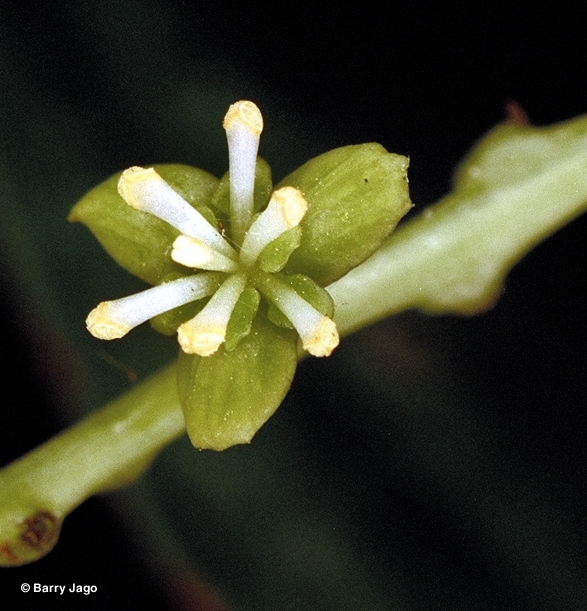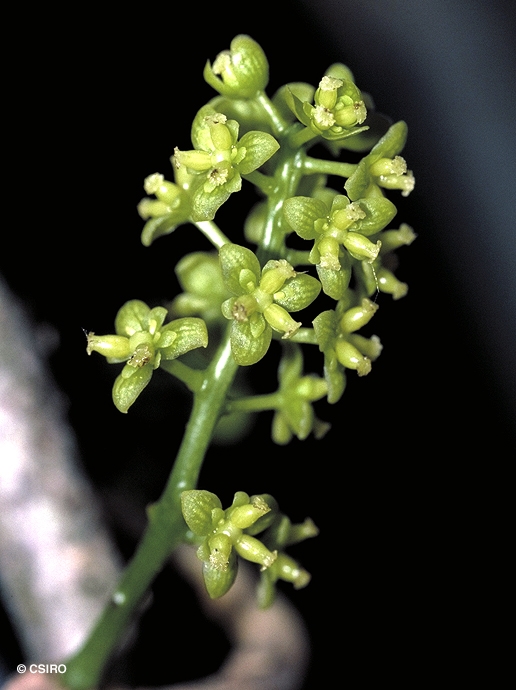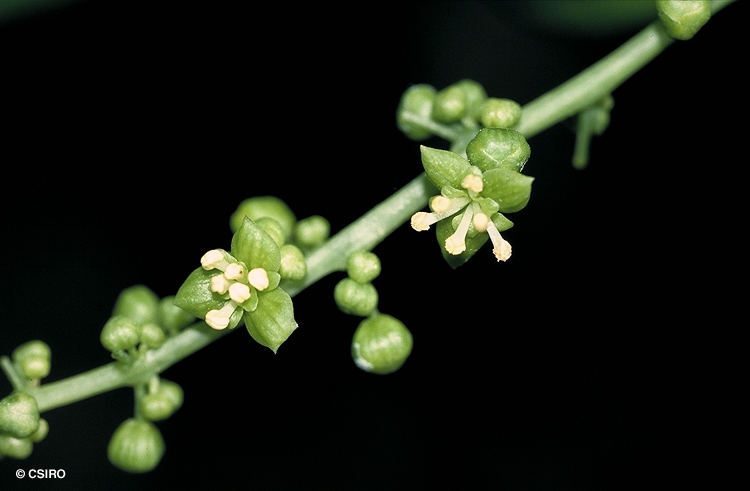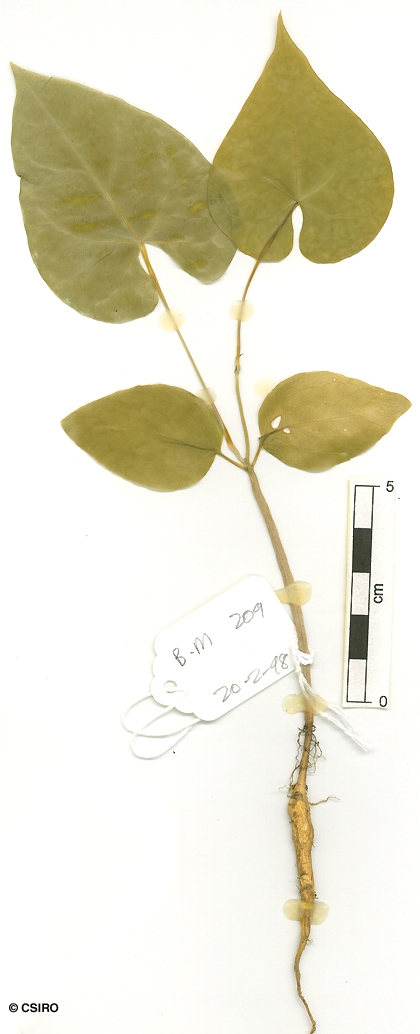Australian Tropical Rainforest Plants - Online edition
Tinospora smilacina Benth.










Bentham, G. (1861) Journal of the Proceedings of the Linnean Society, Botany 5 20: 52. Type: Queensland, Plains of Promise in Eastern Australia, 29 Aug. 1856, D. Moore, s.n. Holo: K.
Snake Vine; Snakevine; Tinospora Vine; Vine, Tinospora; Vine, Snake
Vine stem diameters to 7 cm recorded.
Male flowers: Sepals six, in two whorls of three. Outer sepals about 0.5 mm long, much smaller than the inner sepals which are about 3-5 mm long. Petals six, gland-like, about 2 mm long, much smaller than the sepals in the inner whorl, petals half enveloping the staminal filaments. Stamens six, about 5-7 mm long. Pollen yellow. Female flowers: Flowers about 4-6 mm diam. Sepals six, in two whorls of three, outer sepals about 2 mm long, inner sepals petaloid, about 4.5 mm long. Petals six, obovate, about 1-2 mm long. Staminodes three to six, opposite the petals, about 1.6 mm long. Ovaries three, borne on a column in the centre of the flower. Each ovary about 1.5-2 mm long, stigma sessile, wig-like. Ovules 1 per ovary.
Cotyledons ovate, blades about 32-43 x 14-25 mm, apex acute or obtuse, base truncate, petioles about 7-8 mm long. Cotyledons glabrous, 3-veined. First leaves cordate, about 6-7 x 4-5 cm, apex acuminate, base cordate, petioles about 4-6 cm long. Venation distinctive with the midrib and 4 lateral veins radiating from the base. At the tenth leaf stage: leaf blade cordate, apex acuminate, base cordate. Petiole at least half as long as the leaf blade. Taproot thick and carrot-like (Daucus carota). Seed germination time 18 to 321 days.
Endemic to Australia, occurs in WA, NT, CYP, NEQ, CEQ and southwards as far as north-eastern New South Wales. Altitudinal range from near sea level to 650 m. Grows in beach forest, monsoon forest, gallery forest, lowland and upland rain forest as well as open woodland.
This species may have medicinal properties. (http://www.publish.csiro.au/journals/ajc/recent/t oc/v51n12.html)
This plant used medicinally by Aborigines. Cribb (1981).





